I received an old family PC from the early nineties. The PC had originally been my cousin's, but after being replaced, it then spent a great chunk of my childhood at my uncle's. It was a place where I often met my other similarly-aged cousins, and I have a lot of memories playing games with them on this machine.
When I got the machine from my uncle, it was stone dead. That meant it was disassembly time. Here's my quick picture of the front panel connections so that I could easily re-plug them afterwards:
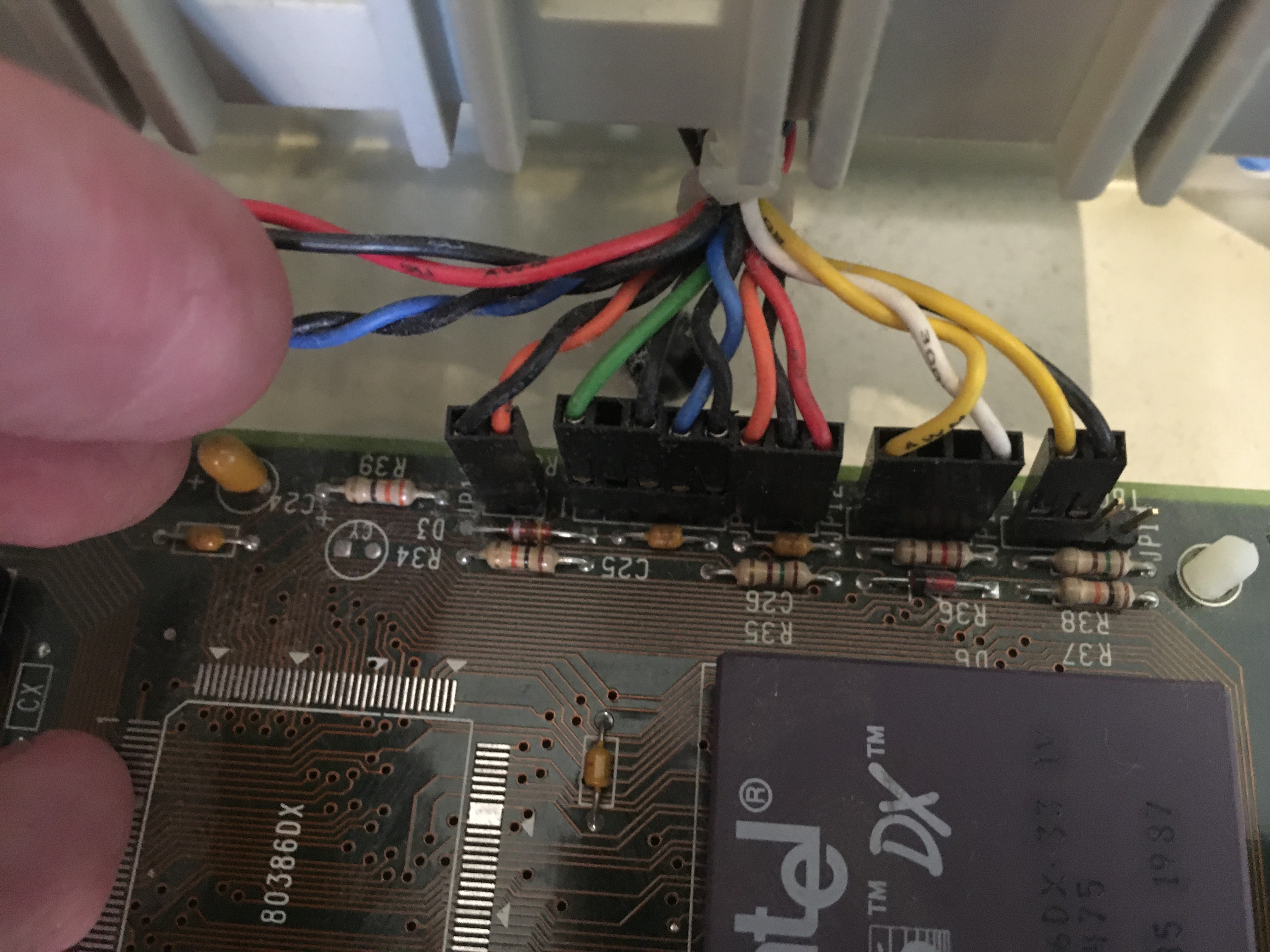
Upon opening the PC, I noticed the Varta BIOS battery had spewed its guts out on the motherboard. I disposed of the leaking battery, and checked all the corroded traces. Despite looking rough, they all seemed to be okay. I also discovered the hard drive was still functional, so I took both an image of the whole disk, as well as copied the whole folder structure to my modern PC. Then, I started taking pictures of the components for identification purposes.
The graphics card is this fairly unremarkable Trident:
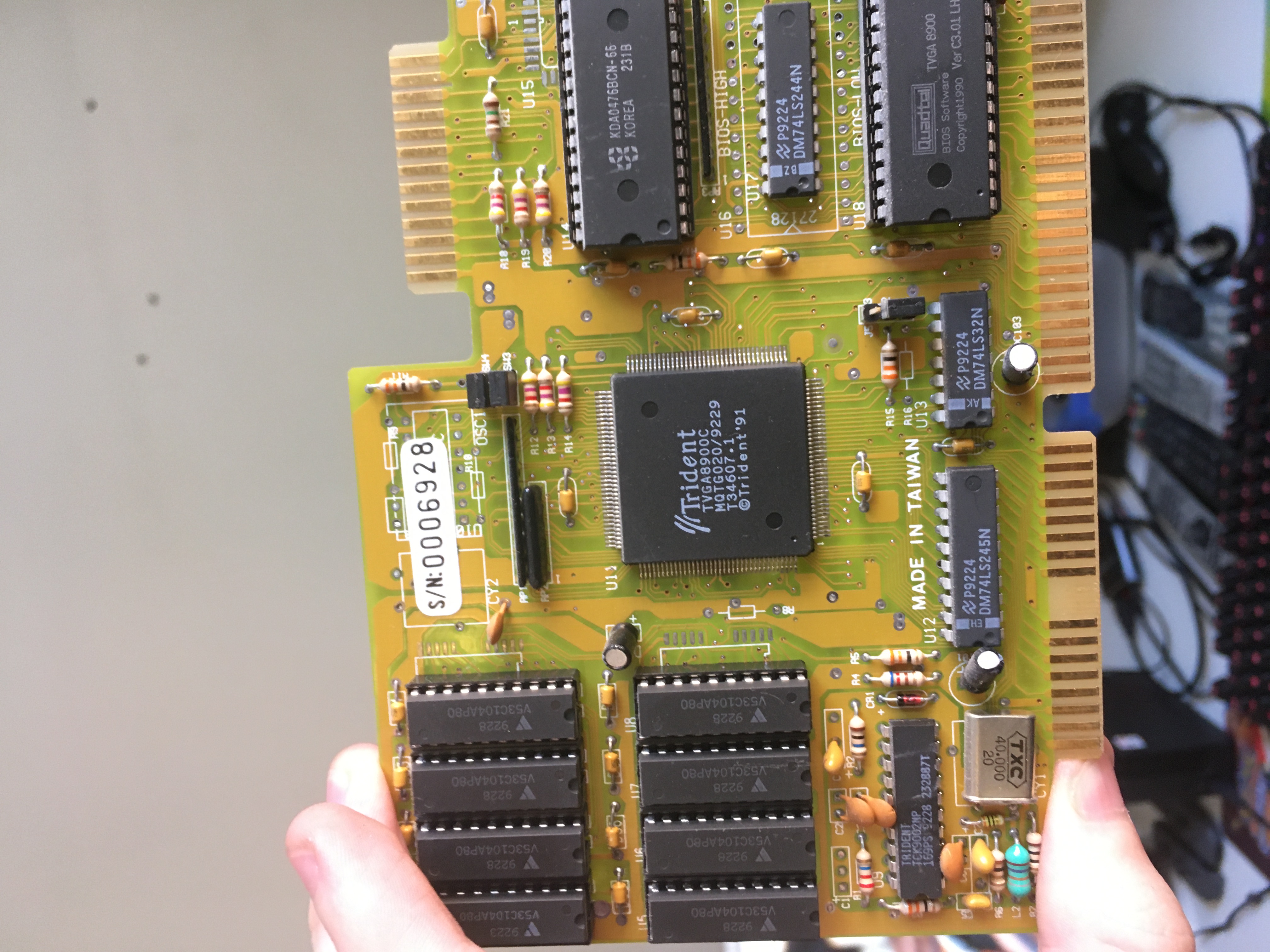
Here's the motherboard. On the top right, next to the AT keyboard connector, we can see the place where the battery used to be. On the bottom left, we can see the CPU, an Intel i386 DX-33.
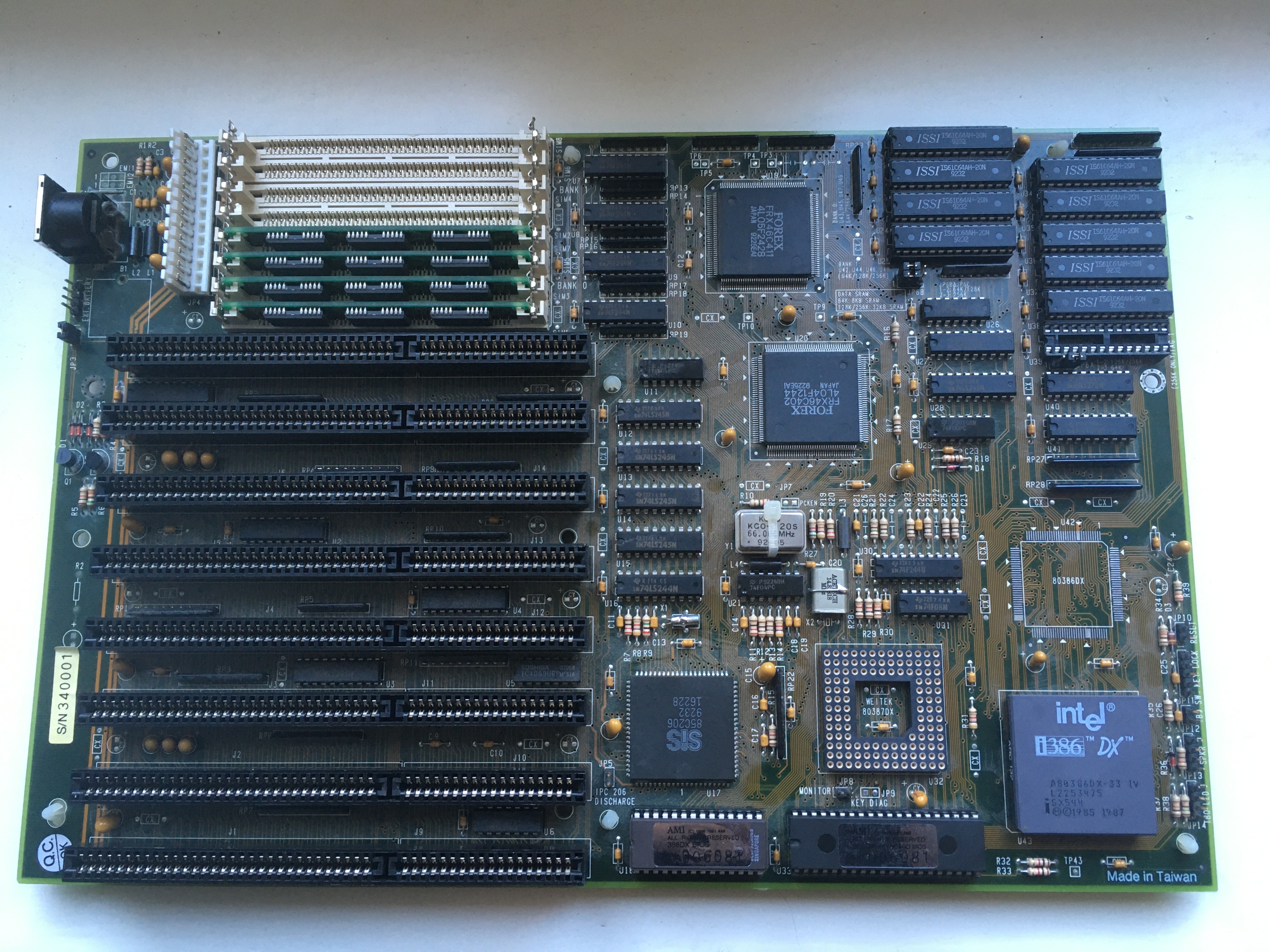
Here's a picture of the FOREX chipset:
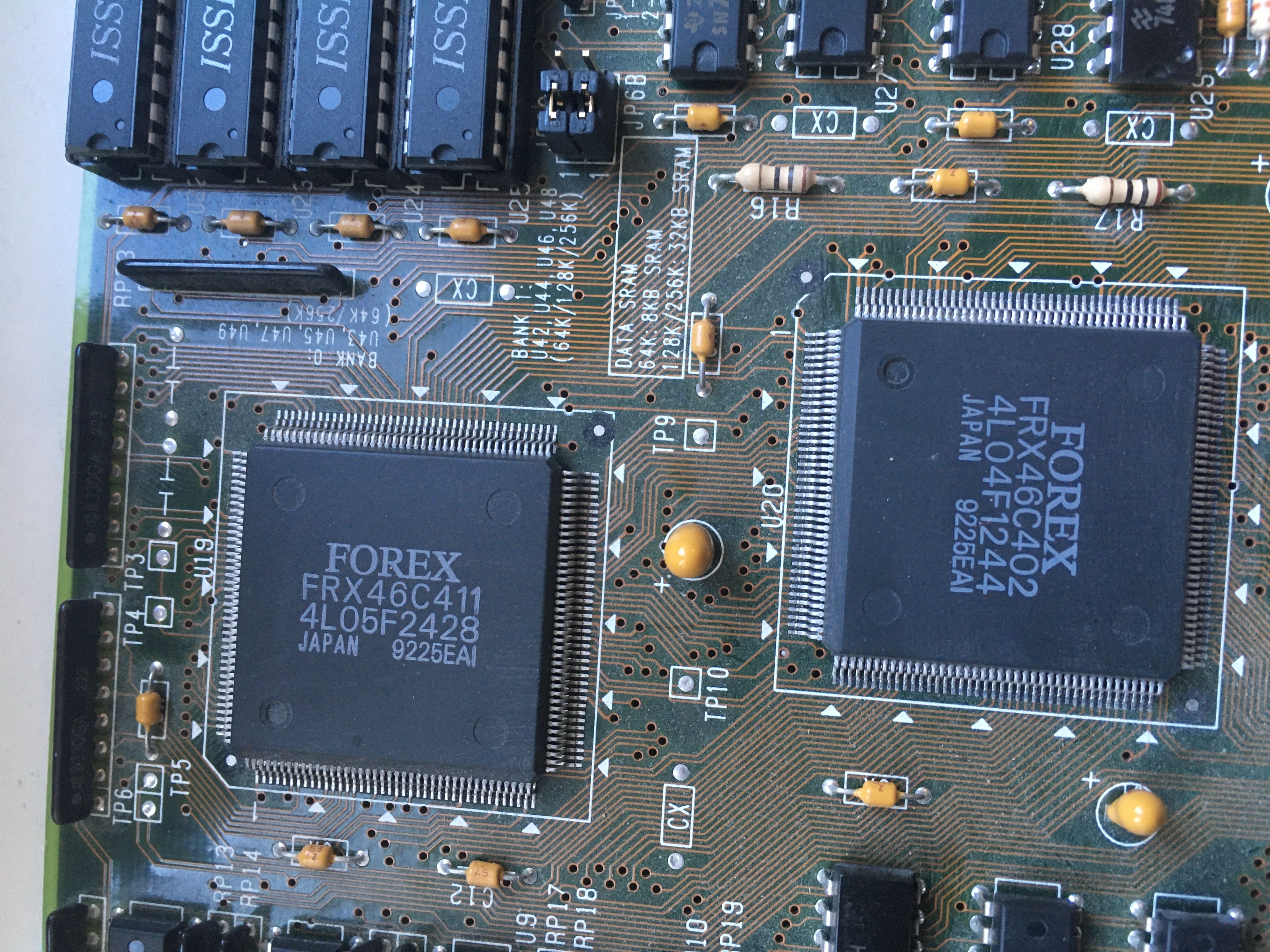
Here are the BIOS chips:

Some of the specs are listed on the back panel badge. Here we can see the PC is from late 1992, way into the 486 era.
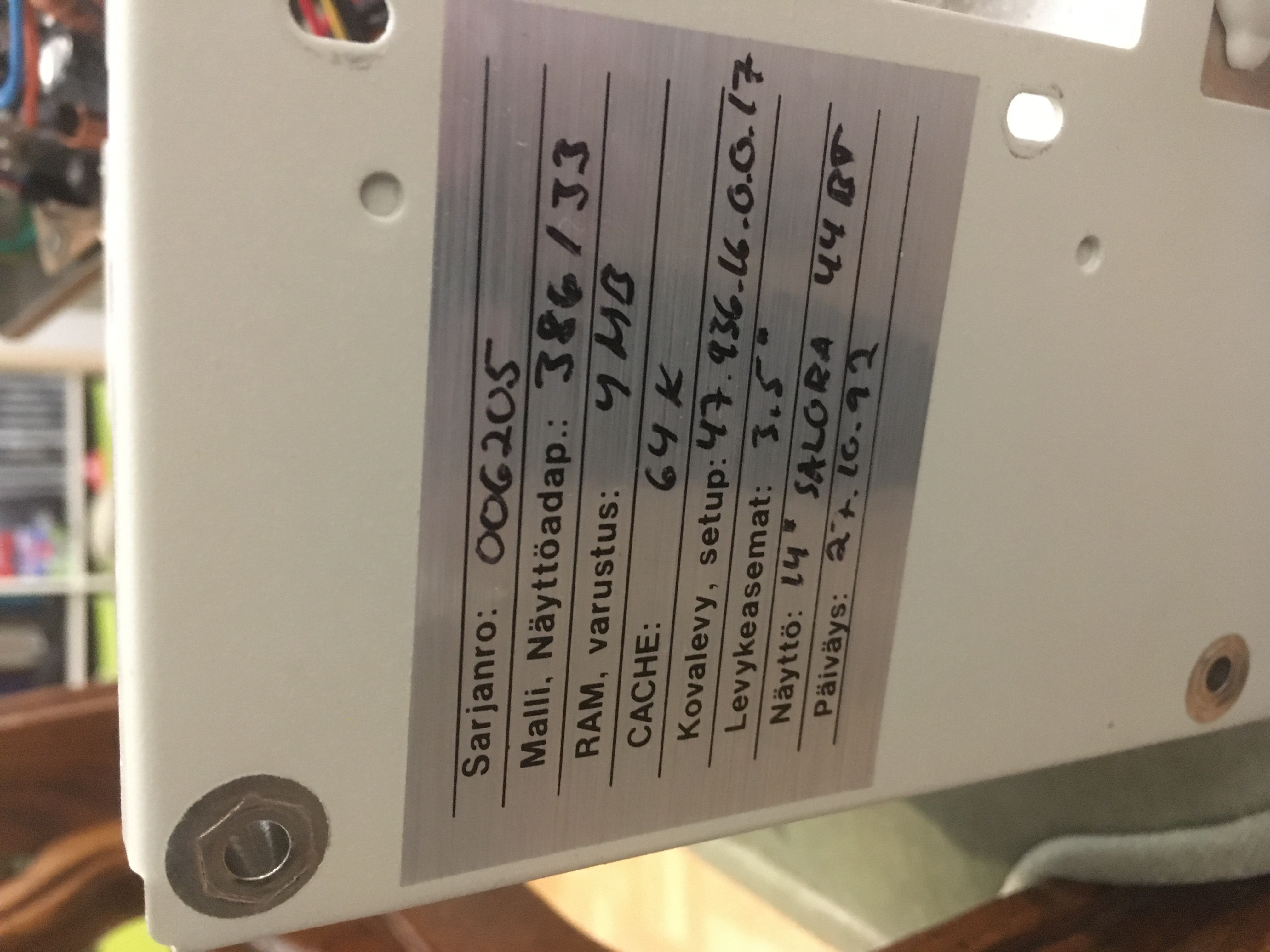
There is also this sticker that shows the PC was bought from KYMDATA in Kotka, Finland:
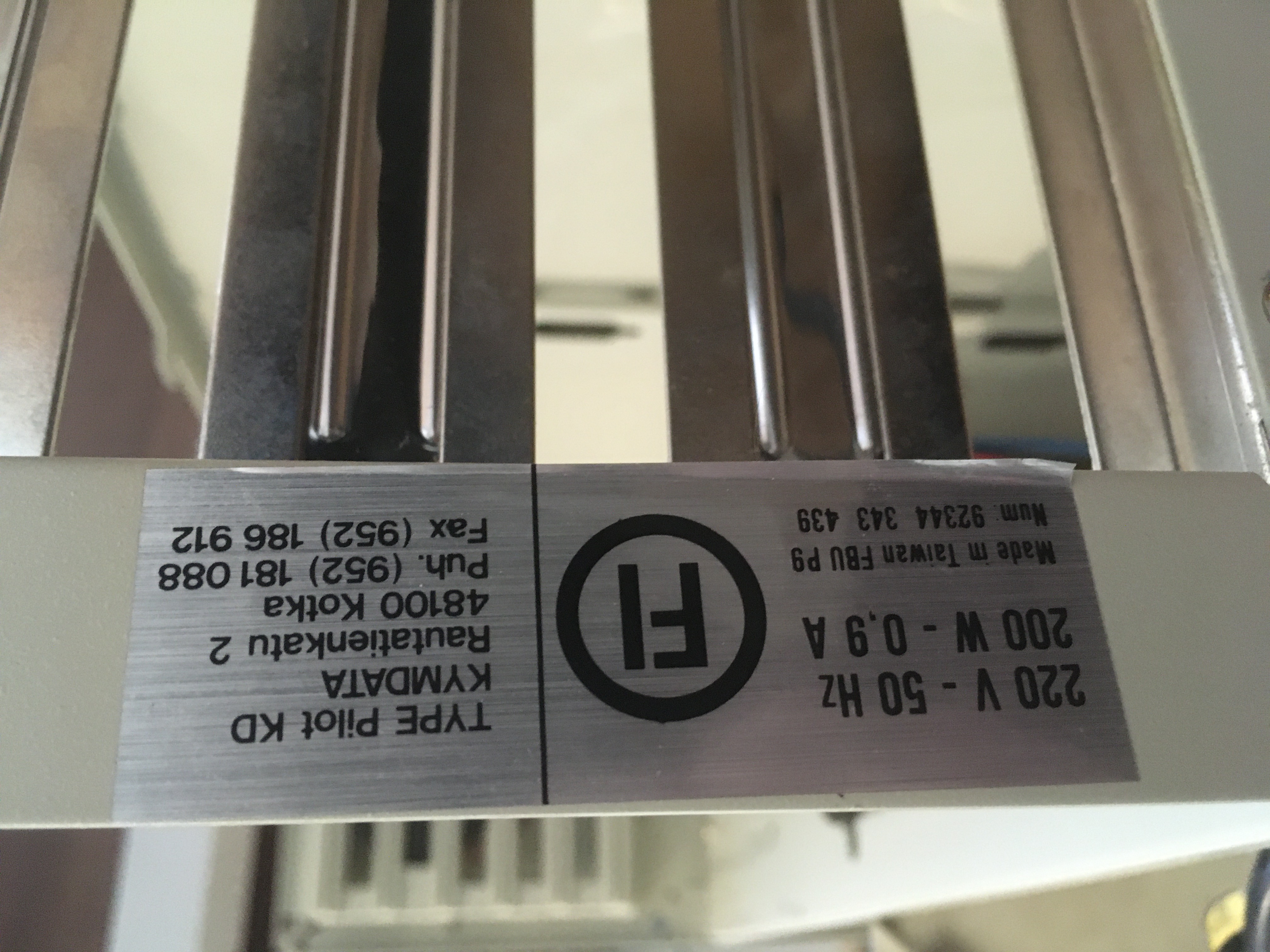
The case itself is of the traditional desktop form factor. There is a "PILOT Computer" badge, but I couldn't find any information about them. They must've been some generic system integrator…

As said, the PC was stone dead, so I had some troubleshooting ahead of me. I measured the PSU outputs, and they were all fine. I then proceeded to prod the various power rails on the motherboard. I had read that the capacitors near the AT power connector were a common point of failure, and as luck would have it, I found one of the caps on the −12 V rail was indeed shorted. I ordered a replacement and swapped the shorted one for it. I was then greeted by this delightful BIOS screen:

At this point, I knew the PC was not a lost cause, so I posted a thread about it on VOGONS.org. To start the thread out, I had a rather embarrassing keyboard issue debug detour. I also received a diagram about the different jumpers on the motherboard, upon which I tried to install a new BIOS battery. That never worked, though, and the PC remained rather annoying to use, as I had to reset the HDD type manually every time the PC had been disconnected from mains for more than a moment.
Oh, and I managed to source a (somewhat anachronistic) Sound Blaster AWE 32 PnP sound card, which I then successfully installed.
At the time, I was connecting the PC to a modern display via my OSSC. I learnt the difference between text and graphics modes the hard way.

This post was retroactively compiled on 2024-01-04 from photos in my photo library.